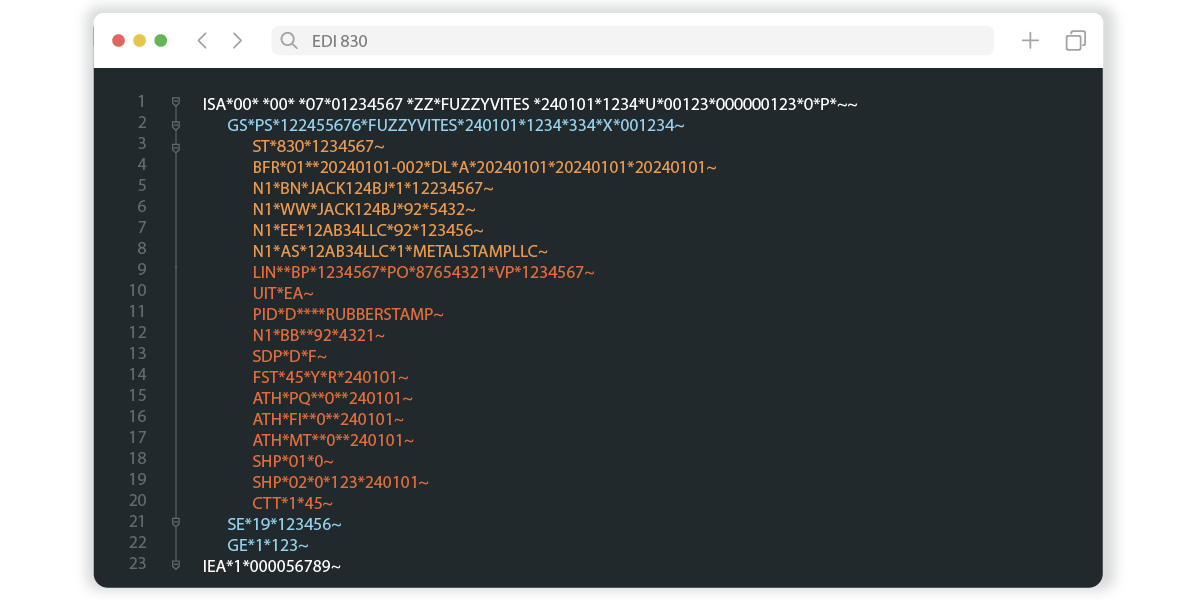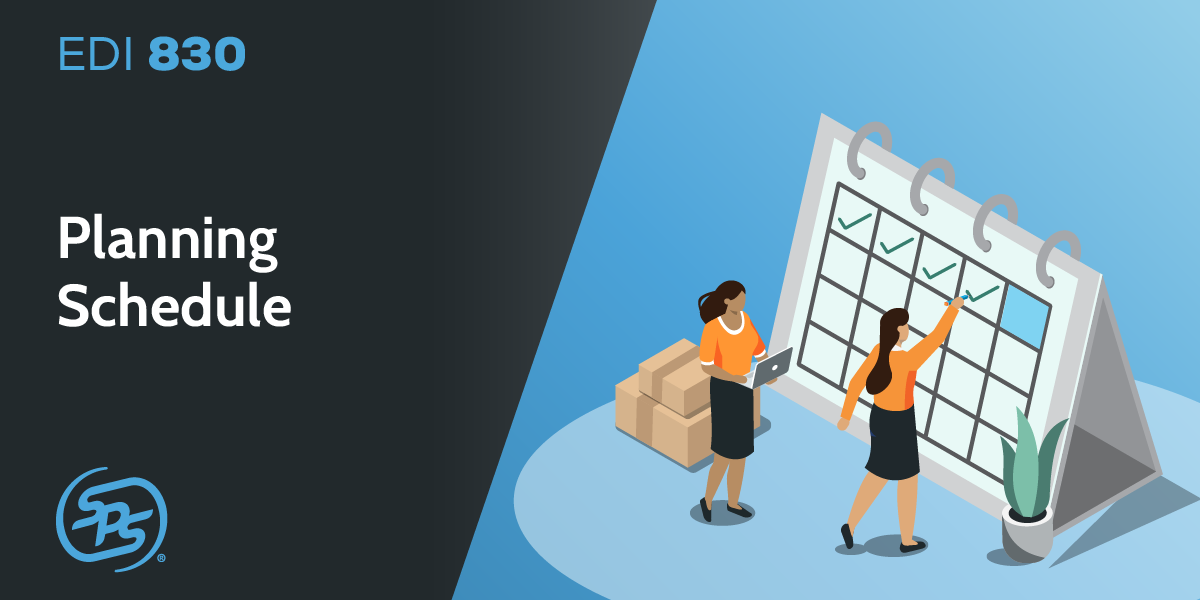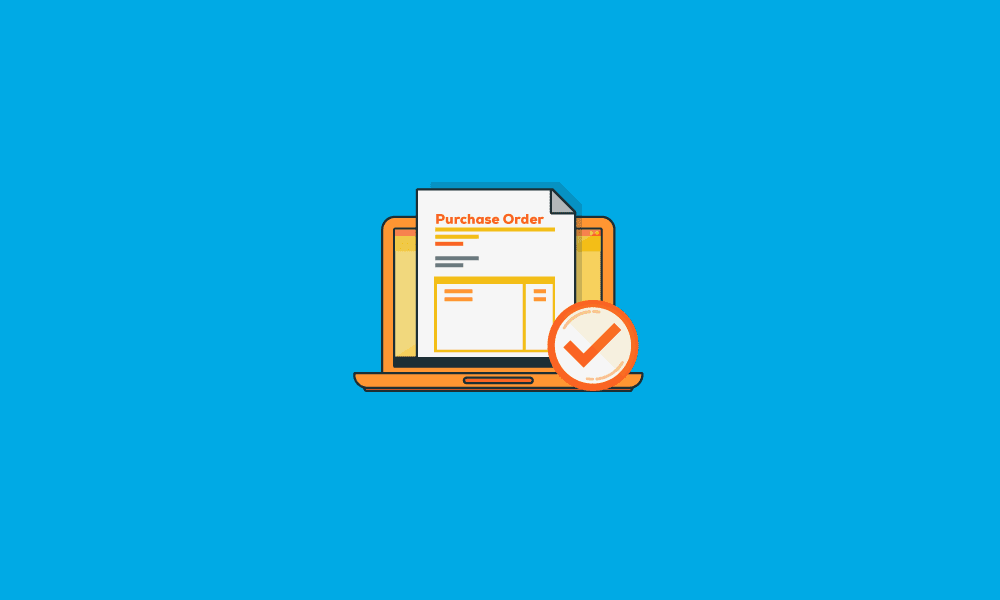The EDI 830 format
The EDI 830 document plays a vital role in enhancing forecasting efforts across various supply chains.

The EDI 830 document format generally includes the following segments and elements:
BFR: Beginning segment for planning schedule
N1: Name
LIN: Item identification
UIT: Unit of measure
FST: Forecast schedule
CTT: Transaction totals
How is the EDI 830 used?
Demand planning:
The EDI 830 is primarily used to communicate forecasted demand from the buyer to the supplier. This includes both short-term and long-term demand projections.
Production scheduling:
Suppliers use the information from the EDI 830 to plan their production schedules, ensuring they can meet the forecasted demand.
Inventory management:
The forecast data helps both buyers and suppliers manage their inventory levels more effectively, reducing the risk of stockouts or excess inventory.
Release capability:
The document may include release capabilities that allow a buyer to authorize shipment and production releases based on the forecasted demand.
Collaboration:
The EDI 830 facilitates a collaborative planning process between trading partners by sharing vital information about future requirements.
Benefits of using an EDI 830 Planning Schedule with Release
Both the sender and the receiver benefit from implementing the EDI Planning Schedule with Release. Many of these benefits are dependent on how automated and integrated the transaction is for both parties. Some of the benefits of EDI 830 include:
Improved efficiency:
Automating the exchange of forecast information reduces manual data entry and the potential for human error, streamlining supply chain operations.
Better visibility:
The EDI 830 provides clear visibility into future demand, which allows all parties in the supply chain to make informed decisions about production and distribution.
Enhanced responsiveness:
With advanced knowledge of demand, suppliers can immediately respond to changes in buyer needs, improving overall supply chain flexibility.
Cost reduction:
More accurate demand planning and inventory management can lead to reduced carrying costs, less waste and lower risk of stockouts or overproduction.
Stronger partner relationships:
Regular and structured communication of forecast information fosters a stronger, more collaborative relationship between buyers and suppliers.
Lead time optimization:
Understanding demand patterns helps in optimizing lead times, as suppliers can adjust their operations to meet delivery schedules more effectively.
Risk mitigation:
By anticipating demand fluctuations, companies can mitigate risks associated with market volatility and supply chain disruptions.
Strategic planning:
Long-term forecasting enables strategic planning for capacity expansion, resource allocation and capital investments.
Common issues regarding EDI 830
Like other EDI documents, the EDI 830 can generate errors or issues from incomplete or incorrect data. Whether you will be sending or receiving the EDI 830 document, it’s important to define expectations with your trading partners. Your EDI provider can help you minimize errors with pre-built maps and workflows that will help you comply with your trading partner’s requirements for the EDI 830 Planning Schedule with Release.
Automate Planning Schedule with Release with SPS Commerce

Managing ongoing EDI tasks can be complex and time-consuming. Full-service EDI providers like SPS Commerce deliver EDI technology and associated staffing resources responsible for customizing, optimizing and operating your EDI solution.
A full-service provider, like SPS Commerce, has an expert team that handles ongoing management of your EDI solution so you can prevent EDI errors and chargebacks.
SPS communicates directly with your trading partners to manage connectivity, setup, requirements, updates and support efforts. Our team takes ownership of understanding your trading partner requirements and making map changes. We actively manage 9,000 changes from retailers each year.
Our full-service team also proactively monitors and optimizes your solution to minimize keystrokes and data entry.
Interested in learning more about our EDI solution?
Additional EDI Resources
Enter a virtual library of information about EDI for suppliers, vendors and distributors to provide you with the product knowledge you need to power your business.





